Key findings:
With its share price having dropped more than 50% from its 2015 high, Next has fallen off its pedestal. Ecommerce expert James Hammersley investigates.
Next management has regularly pared back its sales and profit guidance over the past few years as poor performance at its high-street stores fails to be offset by growth online and from Next Directory.
Analysts at Credit Suisse downgraded Next shares commenting that “its strategy of expanding UK space is incorrect for a mature retailer" and concluding that “with earnings, margins and cash conversion continuing to fall we regard Next as a value trap".
As Next announces a 75,000 sq ft store opening in a former Sainsbury’s store at a shopping centre site in the West Midlands, one has to wonder if the strategy of ‘doing what you’ve always done’ in a very fast-moving market is now no longer a sound way forward.
CEO Simon Wolfson has made some public commitments to change product range, fulfilment and ecommerce. Let's look at what he might want to focus his attention on...
Ecommerce plans still look like catch-up
Retail Week has already highlighted two key proposals from Lord Wolfson.
The launch of Next Unlimited, which allows shoppers to sign up for unlimited next-day delivery for a year across home and clothing for £20, is already an option offered by market leaders such as Amazon and Asos.
Another major project is the roll-out of premium one-hour delivery slots. Customers will have to pay an extra £2 for this but, again, this isn’t ground-breaking.
In ecommerce, as in so many other areas, Next has moved from setting the pace to being a runner struggling to keep up at the back of the pack.
Looking at the ecommerce execution compared with those that are setting pace, there are probably three things that should be considered as a focus for performance improvement.
Shop windows tell customers who you are interested in
There is a risk for any retailer in becoming an established brand, in that it starts from the brand as opposed to the customer.
A good test of whether brand has the upper hand on the customer is how a retailer thinks about its home page. Compare these two executions:
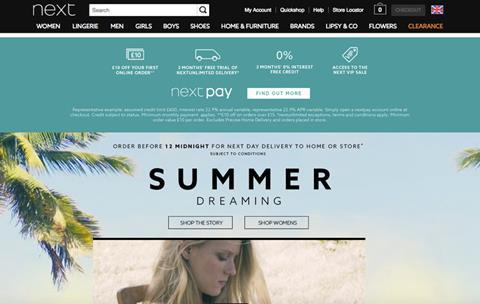
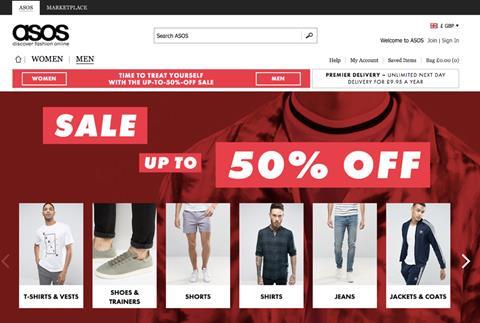
I think I know which one is talking to the customer and therefore likely to be selling more. If I were Lord Wolfson, I’d be asking these questions:
- What is the Next site selling: products or services? Which is the one the customer is interested in?
- Why is the Next Pay banner so dominant?
- Is the Asos focus on next-day delivery a clue to what’s really important in this market?
- Why only provide a link to womenswear?
- What does ‘shop the story’ mean?
I believe that ecommerce sites should sell things in a way that it's easy to know what they sell and why to buy from them.
Next seems to be talking about what’s important to it, rather than to its customers. Has it gone for a push of its Next Pay service too early in the engagement?
Keep it simple or you confuse the customer
Like many other multi-product retailers, Next has a lot on its site.
The key in these circumstances is to work out how to make it easy for customers to find things. Compare these two drop-down menu treatments:
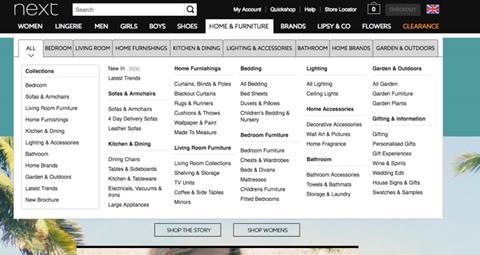
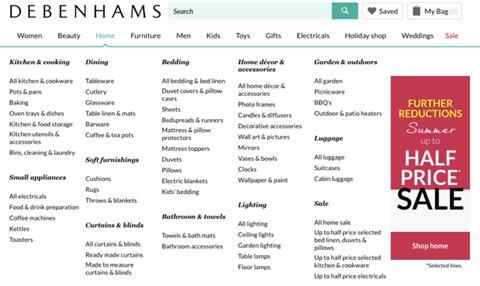
Compared to Debenhams, Next seems to have over-engineered its drop-down menu, providing three different ways of finding products in a small space.
A focused programme of split testing would easily identify how people who land on the site want to engage with the product offer and enable Next to take away at least one of the additional browsing routes, making the engagement easier to absorb and understand.
Again, Next seems to be thinking about itself rather than its customers.
This is particularly in evidence with the ‘Shop Collections’ route, which presents a carousel of different images where the obvious call to action is to scroll through a catalogue or face a series of clicks before you can get to the items in which you are interested.
There is no invitation to select something that appeals and move through to the product page.
I accidentally discovered a link to the product page through the image – serendipity, however, seems a rather casual way of generating revenue.
In clothing, the core of the Next offer, it also fails to help the customer in the way the page operates as a customer runs down though the choices on offer:
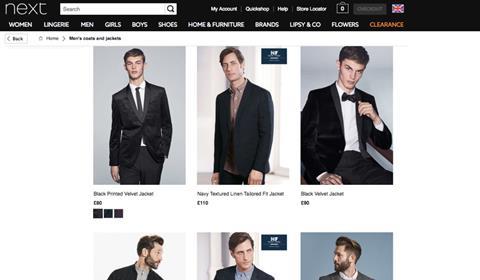
Most of Next’s competitors have filters that move down the page to keep up with the customer, enabling them to browse as they want.
The Next site, however, doesn’t keep pace with the customer, requiring them to go back and find the filters if they want to adjust their browsing criteria.
Lord Wolfson might like to add these questions to his list:
- Why are there three ways to shop on the drop-down menu?
- What insight underpins our decision to engage customers in this way?
- How many people click through to the product page form the ‘collections’?
- Why are there no indications of the link to the product page on the images?
- What do our page analytics tell us about customer engagement with the category page?
- How many customers leave the site at the category stage?
Finally, unlike many of its competitors, Next does not offer the customer a ‘guest’ check-out. Once you head to the checkout with your prospective purchase, this is what you see:

If I were Lord Wolfson, I’d be asking why. I have a feeling that the reply will tell him a huge amount about whether the customer comes first.
We encounter this when there is an internal imperative to capture customer data and ideally make the customer fill in the compulsory fields on a CRM system.
What’s so frustrating about this is that to get something sent to you through the post, you need to hand over most of this anyway – apart from your date of birth, but why would anyone really need that? Age-appropriate emails? I doubt this adds any significant value.
So the questions here will be the obvious ones:
- How many customers fall out at this stage?
- Have you ever asked people if they mind doing this?
- Have you split-tested the same questions at the delivery details stage?
- Do we really need people’s date of birth – especially with the General Data Protection Regulation next year?
The way you retail tells the customer who’s important
A run through our benchmarking app shows that Next is lacking critical ecommerce tools that enable customers to give succinct feedback and enable the ecommerce leadership to understand customer behaviour on the page. Most of its major competitors have them and use them.
What it is missing therefore is any way, other than guesswork, of understanding why customers do what they do and, more importantly, what would encourage those not buying to buy.
If you aren’t interested in getting real-time feedback from customers, you aren’t looking at how they engage and you don’t make it easy to shop – and you then ask for a date of birth and require a password-protected account – no wonder the performance online isn’t making up for the decline in revenue through bricks and mortar.
Online, at least, the customer doesn’t seem to come first. No matter how good the new ranges are later in the year, if they aren’t retailed well, they won’t sell. Next should get a customer-led testing strategy in soon.

James Hammersley is the co-author of Leading Digital Strategy. He is a founding partner of Good Growth, and has worked with O2, The Economist, Game, Ann Summers, The Guardian, Barclays, Bupa and Manchester United FC. For more information, visit goodgrowth.co.uk





















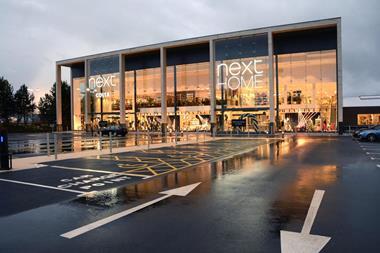
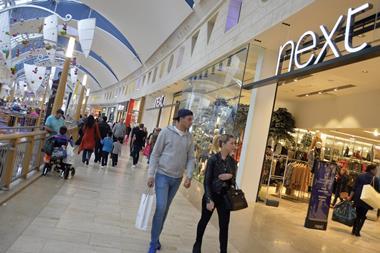



No comments yet